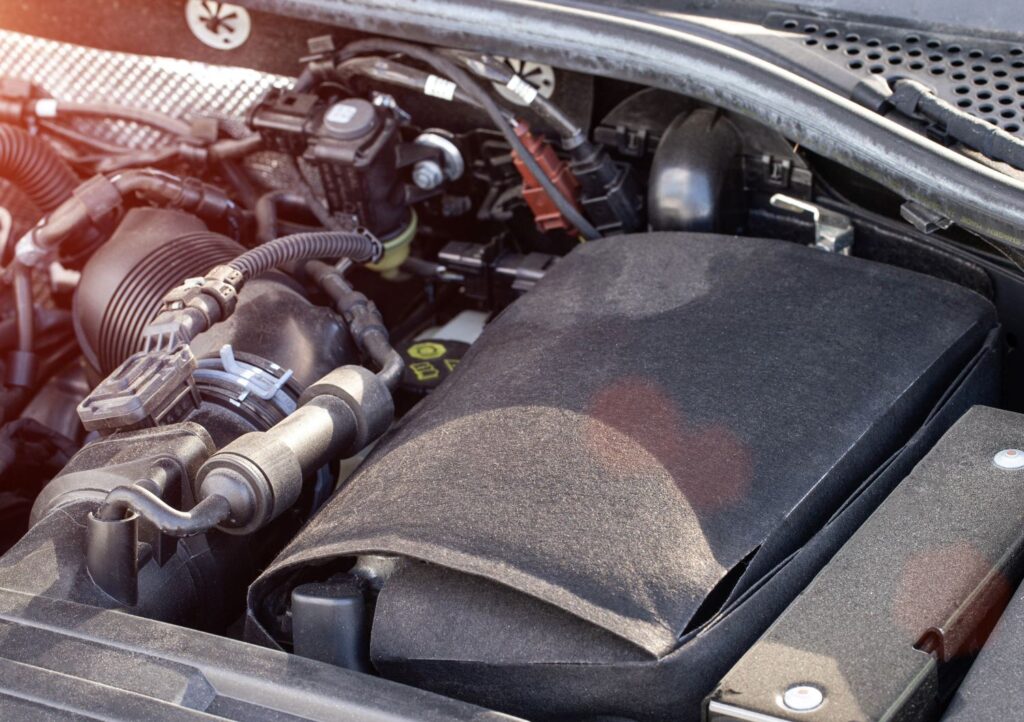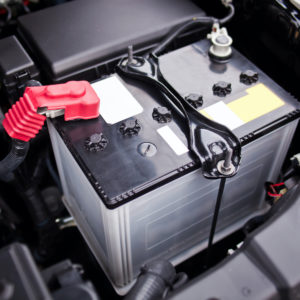Whether you live in a state that experiences winter or will move to one, it’s best to get your car ready for the coldest time of the year.
Your car has many parts that require preparation and protection for winter. One such part is the lead-acid battery, which powers the ignition system and also has to provide quite a bit of electricity to start your vehicle. Can a car battery freeze? How cold can it get before it starts icing up? And will it require repair or replacement afterward?
Can Car Batteries Freeze?
Yes, your car’s battery can freeze in low temperatures. Its electrolyte fluid contains water and sulfuric acid, both of which can freeze.
Pure water freezes at 32 degrees Fahrenheit or 0 degrees Celsius. Meanwhile, the freezing point for sulfuric acid is slightly higher at 50.56°F or 10°C.

At What Temp Does A Car Battery Freeze?
The battery’s freezing point will depend on its charge. A fully charged car battery freezes at a lower temperature than a discharged device.
At 100% charge, the car battery will have a freezing point of -76°F. As long as the temperature stays above that point, the battery won’t freeze.
In contrast, a completely discharged battery will freeze at roughly 32°F. That’s the same temperature that turns ordinary water into ice.
You might think a fully discharged car battery is empty, the opposite of a fully charged device. However, professionals don’t define discharged batteries that way.
According to the experts, a fully discharged battery generates slightly less voltage than usual. A typical car battery produces 12.6 volts at full charge, so a discharged battery releases less than that.
A functioning car battery shouldn’t empty its entire charge. Damaged cells, connector issues, and a faulty charging system can discharge the device, rendering it less effective.
Modern 12.6-volt lead-acid car batteries contain half a dozen cells hooked together in a series circuit. Each battery cell produces two volts. The cells can combine their voltage to meet the higher voltages required by the car’s systems.
However, series-connected batteries have a vulnerability. If one of the cells develops an issue, it will reduce the overall voltage released by its battery.
A 12.6-volt battery with a single faulty cell will produce less voltage. It will count as a discharged battery and become much more vulnerable to freezing.

What Happens When the Car Battery Freezes?
Most lead-acid car batteries use an electrolyte fluid made of sulfuric acid and water in a 1:3 ratio. The acid triggers a chemical reaction with the lead plates that produces voltage. This process discharges the water, raising its freezing point and making it more likely to turn into ice.
When water freezes, it expands in volume. The ice forces the positive and negative plates together. If the lead plates draw too closely together, they might short the battery, which means you’ll need to replace the entire device.
Symptoms of a Frozen Car Battery
Here are the most common warning signs that your car’s lead-acid battery has frozen:
Issues With Electronic Devices and Parts
The car battery powers various devices and parts, like the vehicle’s clock and headlights, even when the engine isn’t running. If the device freezes, it can’t provide enough electricity to run everything.
Battery-reliant parts can develop issues with their performance if the battery freezes. The headlights might not shine as brightly, while the car clock loses accuracy or even resets itself.
Charging System Warning Light
The charging system charges the battery while you’re driving. If the charger doesn’t work, a warning light on the dashboard illuminates, warning you that the battery isn’t charging.
Car Battery Indicator Lights
Does your car battery have an indicator light? The light changes color according to the status of the battery cell it monitors.
The indicator light shines green as long as the battery cell stays charged. If the cell fails, the light turns red.
Difficulties in Starting the Engine
The car battery performs worse when it’s cold. At 32°F, the freezing point of water, it can lose up to a third of its expected power. When the temperature drops below 0°F, the battery can lose more than half of its power.
You’ll keenly feel the car battery’s reduced performance during engine starting. The starter motor turns the engine using battery power. It needs all the power it can get during winter because the cold temperature thickens the engine oil, increasing friction between parts. The loss of battery power will hamper the starter motor’s efforts.
How to Protect the Car Battery From Freezing
Fortunately, there are ways to keep your car’s battery from freezing during winter. Here are some helpful steps:
Park Your Car in a Warm Area
Minimize your car’s exposure to the elements during winter. Park it inside a garage, preferably one with climate control.
If you must park your car outside, set up a parking tent over it. The tent keeps snow off your vehicle’s hood, slowing down the cooling process.
For those who can’t afford a parking tent, look for an open space with plenty of exposure to the sun. Direct sunlight helps warm the car.

Drive Your Vehicle Regularly
Take your car out for a drive whenever you can. Running the engine heats nearby parts like the car battery.
Furthermore, the car’s movement jostles the battery acid. The fluid moves inside the battery, which helps prevent freezing.
Turn Off All Electrical Devices Before Turning Off The Engine
Many car parts and systems run on battery power. Examples include various vehicle lights, the radio, and the windshield wipers.
While they can run even with the engine offline, these parts can drain the battery before the alternator can charge it. A drained battery is more susceptible to freezing.
Switch off these parts before you turn off your car’s engine. Doing this reduces the risk of the battery discharging and draining.
Charge and Maintain the Battery Regularly
Make it a habit to keep the car battery charged and follow the manufacturer’s recommended maintenance schedule. A fully charged battery in good condition is less susceptible to freezing than a discharged, poorly maintained one.
Use a Trickle Charger
The car battery slowly drains over time, even when not supplying power to something. A battery with a low charge is more likely to freeze than a fully charged one.
Usually, you charge the car battery by running the engine. However, you can also connect the battery to a trickle charger. A device that slowly charges your car’s battery, the trickle charger will protect it from draining.
Wrap a Thermal Battery Blanket Around the Battery
Put a battery blanket around the car battery. The blanket will prevent heat loss and keep the battery warm enough to avoid freezing.
Use Antifreeze in the Engine
Antifreeze keeps the engine from freezing during winter. It also benefits the car battery located nearby. By regulating the engine’s temperature, antifreeze helps prevent the battery from freezing.
Have a Damaged Battery? Get Replacement Batteries Online
As previously discussed, extreme temperatures can cause your batteries to retain less charge. Eventually, they won’t be able to hold enough power to start your vehicle and operate its electronics. Sometimes, extreme cold temperatures can even cause the battery to fail. If your battery needs to be replaced, you should do so. Otherwise, you might not be able to use your vehicle at all. Good thing CarParts.com has a wide selection of vehicle batteries.
You don’t need to go out and get the heavy battery yourself. CarParts.com allows you to get the part you need through your mobile phone or computer. Use our vehicle selector and input your vehicle’s details. Make sure to input the exact year, make, model, and engine so that we can recommend the appropriate part.
Save yourself some time and don’t wait for your battery to give out fully before getting a new one. Check out our selection of batteries at CarParts.com and shop for one today!
Any information provided on this Website is for informational purposes only and is not intended to replace consultation with a professional mechanic. The accuracy and timeliness of the information may change from the time of publication.



























